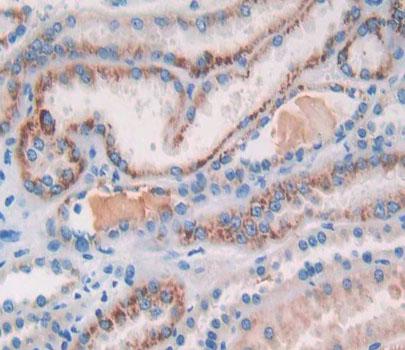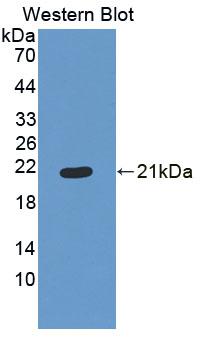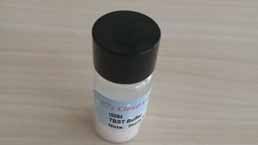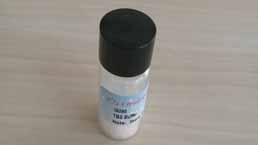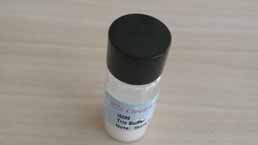Polyclonal Antibody to Endostatin (ES) 

Overview
Properties
- Product No.PAA542Hu06
- Organism SpeciesHomo sapiens (Human) Same name, Different species.
- ApplicationsWB; IHC; ICC; IP.
If the antibody is used in flow cytometry, please check FCM antibodies.
Research use only - DownloadInstruction Manual
- CategoryTumor immunityCardiovascular biology
- SourcePolyclonal antibody preparation, Host Rabbit
- Ig Type IgG, Potency n/a
- PurificationAntigen-specific affinity chromatography followed by Protein A affinity chromatography
- LabelNone
- Immunogen EPA542Hu61-Eukaryotic Endostatin (ES)
- Buffer Formulation0.01M PBS, pH7.4, containing 0.05% Proclin-300, 50% glycerol.
- TraitsLiquid, Concentration 500µg/mL
Sign into your account
Share a new citation as an author
Upload your experimental result
Review

Contact us
Please fill in the blank.
Specifity
The antibody is a rabbit polyclonal antibody raised against ES. It has been selected for its ability to recognize ES in immunohistochemical staining and western blotting.
Usage
Western blotting: 0.5-2µg/mL
Immunohistochemistry: 5-20µg/mL
Immunocytochemistry: 5-20µg/mL
Optimal working dilutions must be determined by end user.
Storage
Store at 4°C for frequent use. Stored at -20°C in a manual defrost freezer for two year without detectable loss of activity. Avoid repeated freeze-thaw cycles.
Stability
The thermal stability is described by the loss rate. The loss rate was determined by accelerated thermal degradation test, that is, incubate the protein at 37°C for 48h, and no obvious degradation and precipitation were observed. The loss rate is less than 5% within the expiration date under appropriate storage condition.
Giveaways
Increment services
Citations
- Endostatin gene therapy enhances the efficacy of IL-2 in suppressing metastatic renal cell carcinoma in miceSpringerLink: u38777121t6660l5
- Erythrocyte Protoporphyrin Fluorescence as a Biomarker for Monitoring Antiangiogenic Cancer TherapySpringerLink: 4v306130302257w0
- Endostatin- and interleukin-2-expressing retroviral bicistronic vector for gene therapy of metastatic renal cell carcinomaWiley: source
- Endostatin neoadjuvant gene therapy extends survival in an orthotopic metastatic mouse model of renal cell carcinomaScienceDirect: S075333221100151X
- Antiangiogenic Activities of Cinnamon, Black and Green Tea Extracts on Experimentally Induced Breast Cancer in RatsScialert: Source
- Inflammation Induced by MMP-9 Enhances Tumor Regression of Experimental Breast CancerPubMed: PMC3619527
- Promotion of adipogenesis by an EP2 receptor agonist via stimulation of angiogenesis in pulmonary emphysemaPubmed:24911647
- Endostatin and kidney fibrosis in aging: a case for antagonistic pleiotropy?Source
- Angiogenesis inhibitor endostatin protects mice with sepsis from multiple organ dysfunction syndromePubMed: 26125086
- Endothelial Dysfunction and Nailfold Videocapillaroscopy Pattern as Predictors of Digital Ulcers in Systemic Sclerosis: a Cohort Study and Review of the LiteraturePubMed: 26142066
- Peripheral vasculopathy in Raynaud phenomenon: Vascular disease biomarkersscience:S1646706X16300052
- Impaired angiogenesis as a feature of digital ulcers in systemic sclerosisPubmed:26920752
- Blood biomarker for early blood brain barrier disruption in ischemic strokepatent:US20170199205A1





